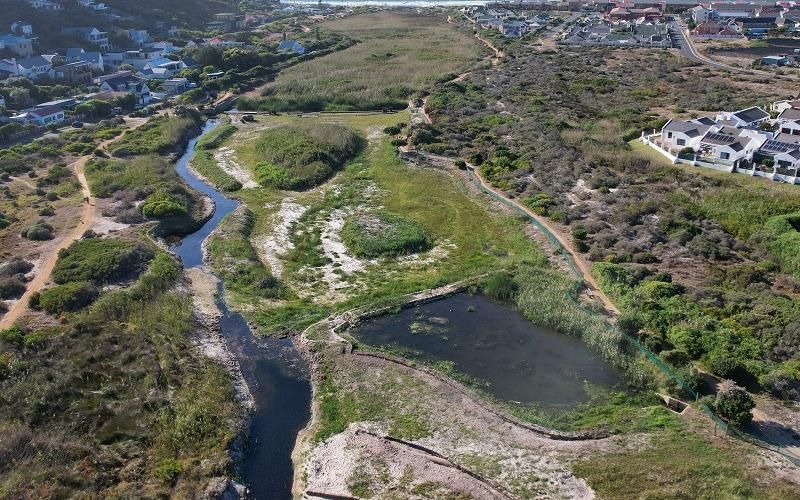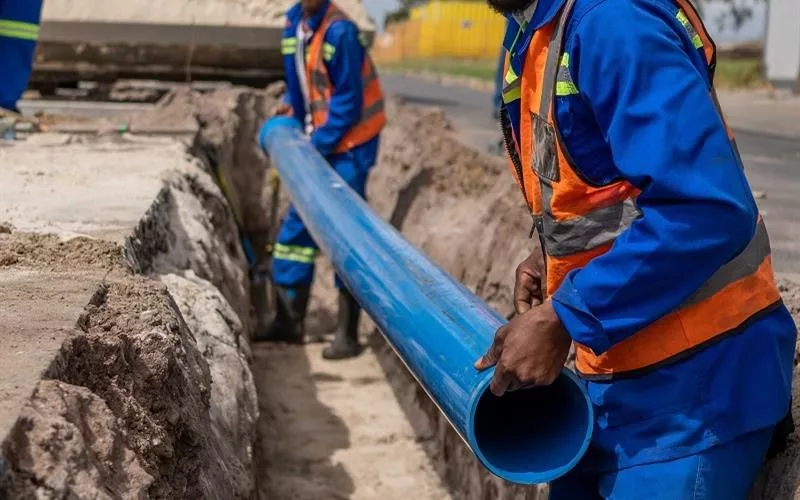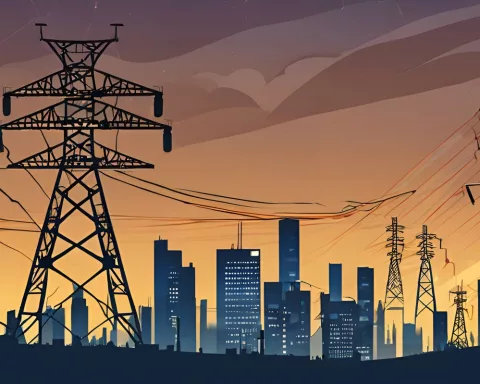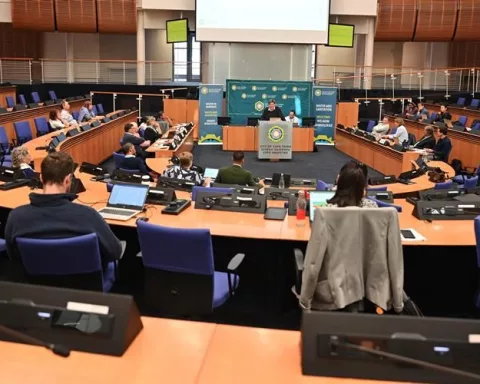The Lower Silvermine Wetland dredging project was a crucial initiative to preserve the ecosystem’s balance, reduce flood hazards, and create a safe breeding environment for threatened species. The project eliminated silt, invasive plants, and reeds overpowering the natural landscape while promoting the growth of native plant species. The LSW serves as a model for other city waterways, providing spaces for leisure activities while ensuring a safe habitat for various wildlife and enhancing overall environmental, physical, and mental health.
The Lower Silvermine Wetland dredging project was initiated to preserve its wellness and ecological balance, create a balance between wildlife and urban progress, and enhance inland water quality. Phase Two addressed an estimated 79,000m² of wetland area and aimed to eliminate silt, invasive plants, and reeds overpowering the natural landscape. The dredging project created a safe breeding environment for threatened species, reduced flood hazards, and designed a hospitable urban waterway, serving as a model for other city waterways.
Stepping into a Greener Future
As the Western Leopard Toad (WLT) entered its mating period, the City of Cape Town’s Water and Sanitation Directorate launched a significant initiative aiming at a healthier, greener environment. The Lower Silvermine Wetland (LSW) was the focus, requiring extensive efforts to preserve its wellness and ecological balance. This project was not only about environmental safeguarding, but it aimed to create a balance between wildlife and urban progress – a mutual coexistence where both entities could prosper without causing disturbance to one another.
Driven by a commitment to conservation, the Catchment, Stormwater, and River Management (CSRM) division initiated Phase Two of the Lower Silvermine Wetland dredging project in February 2024. The exact timing, scheduled around the WLT’s breeding season, ensured minimal interference with the vulnerable amphibians and their young.
Phase Two addressed an estimated 79 000m2 of wetland area, where in-depth dredging took place. The task was to eliminate silt, invasive plants, and reeds overpowering the natural landscape. The initiative started at the WLT Pond and extended to the base near Main Road.
This continuous river maintenance, part of the City’s initiative, aimed to enhance the inland water quality, strike a balance between urban growth, and sustain the natural ecosystem’s equilibrium. Despite the hefty R3 million estimated cost of Phase 2, following the R6 million earmarked for Phase 1, the benefits made it a worthy investment.
The Positive Impact of the Dredging Project
Creating a Safe Breeding Environment for Threatened Species
The LSW, acknowledged by CapeNature for its conservation status, plays a vital role as a breeding site for the WLT. The toads often travel up to 2.5 km to these breeding ponds for egg-laying. After hatching, the tadpoles feed on algae found at the base of these ponds. Therefore, it becomes critical to keep these ponds adequately open, enabling sunlight to penetrate the bottom and facilitate algae growth.
The dredging project also promotes the growth of native plant species by removing large reed beds growing due to silt accumulation. After dredging, the natural water flow will keep these reeds immersed in deep water, fostering diverse aquatic and semi-aquatic plants’ growth. This strategy is crucial for stabilizing the ecosystem and managing the wetland balance.
Reducing Flood Hazards
Silt accumulation in the ponds has reduced their hydrological capacity, crucial for flood control. By rectifying this problem, the dredging project ensures that, without intervention, these ponds do not become a flood threat to nearby residential properties.
Designing a Hospitable Urban Waterway
The LSW serves as a model for urban waterways, establishing a cooperative relationship between the environment, people, and their wellbeing. It’s a prototype for other city waterways, highlighting the significance of adequate wetland maintenance.
Well-kept inland waterways provide spaces where locals can indulge in leisure activities while ensuring a safe habitat for various wildlife. These waterways and vleis significantly enhance overall environmental, physical, and mental health, offering a healthy environment for residents and fauna alike.
The LSW encourages residents to walk their dogs, enjoy a relaxed walk, relish the tranquil greenery, and immerse themselves in the melody of bird songs and toad calls. The scenic beauty of the mountains and flowing streams makes this place a living testament to nature’s splendor.
Because of its closeness to the Table Mountain National Park, the Lower Silvermine Wetland has been shielded from extensive urbanization. The Water and Sanitation Directorate’s relentless efforts will guarantee minimal disturbances, decreasing the necessity for major maintenance interventions. This strategy will address concerns stemming from silt accumulation, ensuring the lasting wellness of this magnificent wetland.
As eloquently stated by Councillor Zahid Badroodien, Mayoral Committee Member for Water and Sanitation, “The importance of well-maintained inland waterways cannot be overstated…they are vital to the survival of our diverse ecosystems.” This commitment and work towards preserving and maintaining the LSW indeed showcases the human spirit’s capacity to nurture and protect our invaluable natural habitats.
What was the Lower Silvermine Wetland dredging project?
The Lower Silvermine Wetland dredging project was a crucial initiative to preserve the ecosystem’s balance, reduce flood hazards, and create a safe breeding environment for threatened species. The project eliminated silt, invasive plants, and reeds overpowering the natural landscape while promoting the growth of native plant species.
What was the purpose of Phase Two of the dredging project?
Phase Two of the Lower Silvermine Wetland dredging project aimed to eliminate silt, invasive plants, and reeds overpowering the natural landscape. The dredging project created a safe breeding environment for threatened species, reduced flood hazards, and designed a hospitable urban waterway, serving as a model for other city waterways.
Why was the timing of Phase Two scheduled around the Western Leopard Toad’s breeding season?
The timing of Phase Two was scheduled around the Western Leopard Toad’s breeding season to ensure minimal interference with the vulnerable amphibians and their young.
How did the dredging project promote the growth of native plant species?
The dredging project promoted the growth of native plant species by removing large reed beds growing due to silt accumulation. After dredging, the natural water flow will keep these reeds immersed in deep water, fostering diverse aquatic and semi-aquatic plants’ growth.
What positive impact did the dredging project have on the Lower Silvermine Wetland?
The dredging project had several positive impacts on the Lower Silvermine Wetland. It created a safe breeding environment for threatened species, reduced flood hazards, and designed a hospitable urban waterway. The project also promoted the growth of native plant species and ensured well-kept inland waterways, providing spaces where locals can indulge in leisure activities while ensuring a safe habitat for various wildlife.
Why is the Lower Silvermine Wetland significant?
The Lower Silvermine Wetland is significant because it serves as a model for other city waterways, establishing a cooperative relationship between the environment, people, and their wellbeing. It’s a prototype for well-kept inland waterways, highlighting the significance of adequate wetland maintenance. Additionally, the LSW is a breeding site for the Western Leopard Toad, which plays a vital role in the ecosystem.









